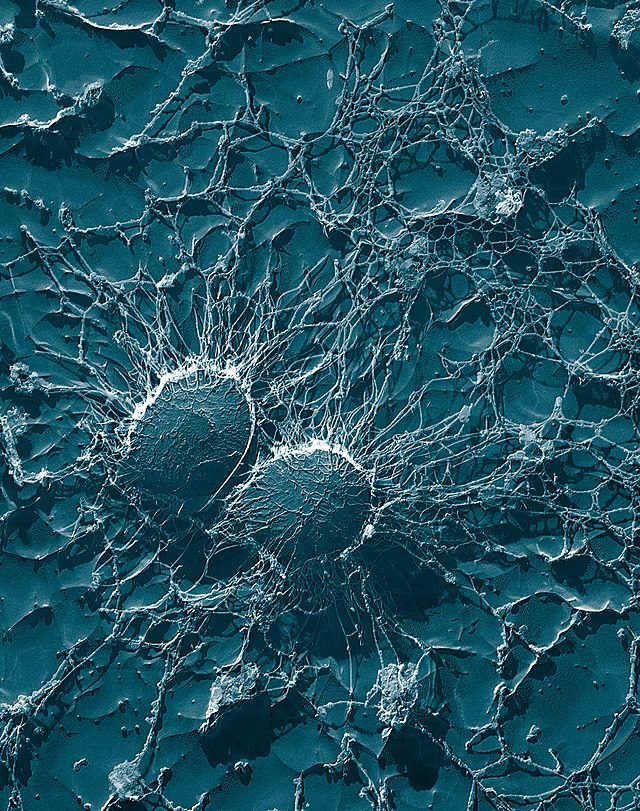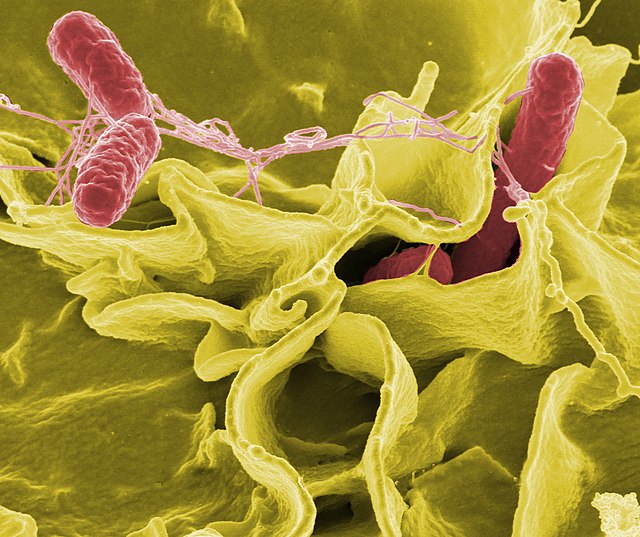Top Qs
Timeline
Chat
Perspective
List of human microbiota
From Wikipedia, the free encyclopedia
Remove ads
Human microbiota are microorganisms (bacteria, viruses, fungi and archaea) found in a specific environment. They can be found in the stomach, intestines, skin, genitals and other parts of the body.[1] Various body parts have diverse microorganisms. Some microbes are specific to certain body parts and others are associated with many microbiomes. This article lists some of the species recognized as belonging to the human microbiome and focuses on the oral, vaginal, ovarian follicle, uterus and the male reproductive tract microbiota.
Remove ads
Categories of bacteria
Summarize
Perspective
The "reference" 70 kg human body is estimated to have around 39 trillion bacteria with a mass of about 0.2 kg.[2][3][4][5] These can be separated into about 10,000 microbial species, about 180 of the most studied is listed below here. However, these can broadly be put into three categories:[6]
Spheres or ball-shaped (cocci bacteria)
Cocci are usually round or spherical in shape. They can form clusters and are non-motile.[7] Examples include Staphylococcus aureus, Streptococcus pyogenes, and Neisseria gonorrhea.

Rod-shaped bacteria (bacilli)
Bacilli usually have a rod or cylinder shape. Examples include Listeria, Salmonella typhimurium, Yersinia enterocolitica, and Escherichia coli.



Spirals or helixes (spirochetes)
Spirochetes are usually spiral or corkscrew shaped and move using axial filament. Examples include Treponema pallidum and Leptospira borgpetersenii.[8]

Remove ads
Naming convention for the table
Remove ads
Vagina
The vaginal microbiota is shaped by puberty, pregnancy and menopause. Vaginal microbiota including some Lactobacillus species protect the vagina from harmful pathogens.[10] They convert glucose to lactic acid and this acidic environment kills harmful pathogens. The vaginal microbiota in pregnancy varies markedly during the entire time of gestation. The species and diversity of the microorganisms may be related to the various levels of hormones during pregnancy. Vaginal flora can be transmitted to babies during birth. Vaginal dysbiosis can lead to vaginal infections like bacterial vaginosis which makes one relatively susceptible to sexually transmitted diseases. Good personal hygiene and probiotics promote a healthy vaginal microbiota.[11]
Uterus
The healthy uterine microbiome has been identified and over 278 genera have been sequenced. Bacteria species like Fusobacterium are typically found in the uterus.[12] Although Lactobacillus may be beneficial in the vagina, "increased levels in the uterus through a breach in the cervical barrier" may be harmful to the uterus.[13]
Ovarian follicle
The ovarian follicle microbiome has been studied using standard culturing techniques. It has been associated with the outcomes of assisted reproductive technologies and birth outcomes. Positive outcomes are related to the presence of Lactobacillus spp while the presence of Propionibacterium and Actinomyces were related to negative outcomes. The microbiome can vary from one ovary to the other. Studies are ongoing in the further identification of those bacteria present.[13]
Remove ads
Male reproductive tract
The microbiome present in seminal fluid has been evaluated. Using traditional culturing techniques the microbiome differs between men who have acute prostatitis and those who have chronic prostatitis. Identification of the seminal fluid microbiome has become one of the diagnostic tools used in treating infertility in men that do not display symptoms of infection or disease. The taxa Pseudomonas, Lactobacillus, and Prevotella display a negative effect on the quality of sperm. The presence of Lactobacillus spp in semen samples is associated with a very high normal sperm count.[13]
Remove ads
Mouth
Summarize
Perspective
The oral microbiota consists of all the microorganisms that exist in the mouth. It is the second largest of the human body and made of various bacteria, viruses, fungi and protozoa.[14] These organisms play an important role in oral and overall health. Anthony Van Leeuwenhoek was the first to view these organisms using a microscope he created.[14] The temperature and pH of saliva makes it conducive for bacteria to survive in the oral cavity. Bacteria in the oral cavity include Streptococcus mutans, Porphyromonas gingivalis, and Staphylococcus.[15] S. mutans is the main component of the oral microbiota.[15]
A healthy oral microbiome decreases oral infections and promotes a healthy gut microbiome. However, when disturbed, it can lead to gum inflammations and bad breath.[16] Dental plaque is formed when oral microorganisms form biofilms on the surfaces of teeth. Recommended practices to maintain a healthy oral microbiome include practicing good oral hygiene (brushing twice and flossing, replacing toothbrush often), eating healthy diet (food with little or no added sugars and ultra processed foods), drinking lots of water and taking probiotics.
Remove ads
See also
Other lists of the human body's contents and building bricks
References
Wikiwand - on
Seamless Wikipedia browsing. On steroids.
Remove ads